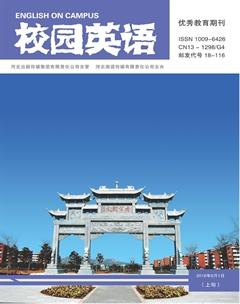Witnessing Trauma: A Reading ofA Pale of Hills Based on Trauma Theory
Wang Xiao
【Abstract】This thesis tries to interpret A Pale View of Hills based on trauma theory, and to have a detailed analysis from the aspects of trauma experience and memory and recovery from trauma in order to illustrate the connotations behind trauma and how to get healed and regain new hope for the future.
【Key words】trauma; experience; memory; recovery
Kazuo Ishiguro is now among the most successfully contemporary literary novelists in Britain, and has been ranked “among Englands most important contemporary novelists” (Shaffer, 1998: 1). His first novel, A Pale of Hills, won him Winifred Holtby Prize. Many literary critics have done varied researches on A Pale View of Hills, and some argue that Etsukos trauma cannot be healed, but the author of the thesis holds that after a bitter struggle Etsuko finally works through her trauma and puts her traumatic memory behind.
1. Experience and Memory of Trauma
In Caruths opinion, trauma is an overwhelming experience that can be caused by a series of events (1996). In A Pale View of Hills, there is obviously no direct description of the nuclear bombing, but its shadows can be seen everywhere. When Etsuko recalls, she shows a traumatized city. Although years has passed and reconstruction has begun, damages it has remained still exists. This “wasterground” just resembles T. S. Eliots “Waste Land”, reminding people of the unforgettable past and pains. Many houses have been destroyed, and lots of people live in poor circumstances.
In A Pale View of Hills, it is Etsukos memory that constitutes the whole novel. “Memory, I realize, can be an unreliable thing.” (p32) At the beginning of the novel, it is told that Etsukos elder daughter Keiko committed suicide. But Etsuko doesnt explain the reason, instead, she begins to tell her story with Sachiko. “Instead, she tells another story altogether, going back years and talking about somebody she once knew.” (Mason, 337) “Another story” refers to the story of Sachiko and her daughter Mariko. So, why does she tell “another story”? In fact, Etsuko and Sachiko are the same person, and so are Mariko and Keiko, and it is obviously that Etsuko inputs her life into Sachikos story. Ishiguro says if someone thinks his experience is too miserable or too unbearable to speak out, he will through other peoples stories to tell his story that he cannot face directly (Zhang Xiaoyi, 2011). So Etsuko is using “another story” as some kind of self-protection against her own trauma.
2. Recovery from Trauma
Keikos death is Etsukos perpetual trauma, and at first she avoids talking about Keiko. When Etsuko and Niki come across Mrs. Waters, she still doesnt have the courage to tell Mrs. Waters that Keiko was dead. Instead, she lies about her death, and pretends that her daughter Keiko is still alive and lives well abroad. When Etsuko starts to recall the past things, she realizes that her decision was wrong and she should be responsible for Keikos death. She can finally talk about Keiko with Niki, and admit her mistake.
Besides, the relationship between Etsuko and Niki is better. Etsuko shows more love and tolerance to her younger daughter Niki and their relationship is closer and better. Niki is an affectionate girl and a good listener who comforts Etsuko that its not her responsibility for Keikos death. When Niki is leaving, Etsukos gesture of “waving” suggests that Etsuko comes back to the reality and says goodbye to the past, and finally her trauma is healed.
3. Conclusion
In A Pale View of Hills, Ishiguro presents a picture of the devastated Nagasaki and describes peoples trauma and how they try to put their bitter memories behind in order to move on. After witnessing the traumatized city and people, readers realize that to avoid these tragedies, one cannot ignore or misrepresent the history and should learn lessons from the past.
References:
[1]Caruth,C.“Trauma and Experience:Introduction”[A].Trauma:Explorations in Memory.Eds.Caruth.Baltimore:Johns Hopkins UP.1995.
[2]Mason,G.An Interview with Kazuo Ishiguro[EB/OL].Retrieved on Oct.30,2015 from http://www.cashl.edu.cn.
[3]Ishiguro,K.A Pale View of Hills[M].London:Faber & Faber.1982.
[4]Shaffer,B.W.Understanding Kazuo Ishiguro[M].Columbia,SC:University of South Carolina Press.2008.
[5]石黑一雄著,张晓意译,远山淡影[M].上海:上海译林出版社,2011.
[6]张怡薇,充满迷雾的伤痕书写:石黑一雄及其作品研究[D].上海:复旦大学,2012.

